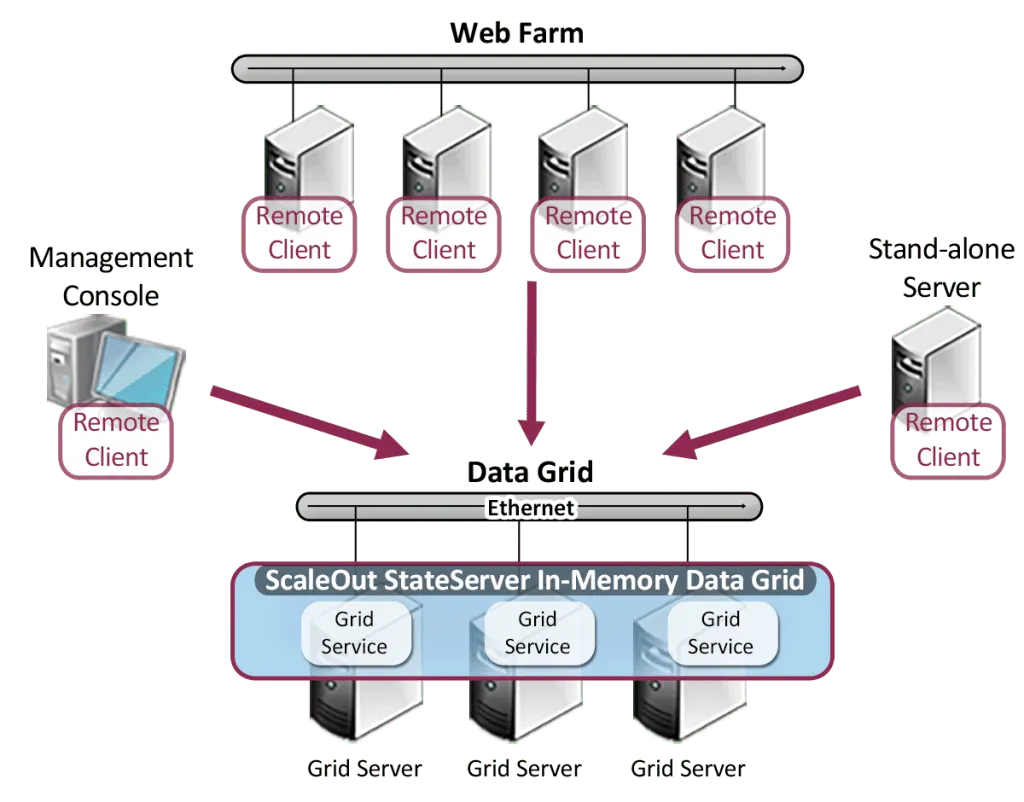
ScaleOut Remote Client enables secure, high-availability connections from client applications to ScaleOut’s in-memory data grid, ensuring fast, reliable access.
Vendor
ScaleOut Software
Company Website

ScaleOut Remote Client is a software component that allows client applications running on separate web or application servers to securely and efficiently connect to a remote ScaleOut in-memory data grid (IMDG). It manages connectivity, load balancing, and failover, ensuring continuous access even if some grid servers are offline.
Key Features
Transparent Grid Connectivity Automatically connects client applications to the IMDG using TCP and optional SSL.
- Maintains connectivity even if some grid servers are offline.
- Automatically tracks grid status and directs requests to the optimal server.
Dynamic Load Balancing Downloads and refreshes information on grid membership and load balancing.
- Directs access requests to the most efficient grid server at all times.
- Updates routing as the grid’s status changes.
High Availability and Failover Ensures uninterrupted access to the IMDG.
- Automatically switches to alternative servers if a grid server fails or is taken offline.
- Detects and communicates with new servers as they are added.
Performance Optimization Uses multiple TCP connections and client-side caching.
- Configurable cache for deserialized, recently accessed objects lowers access times and reduces network/CPU usage.
- Minimizes response times for slowly changing data.
Easy Configuration and Management Simple setup and ongoing management.
- Initial configuration with a list of gateway addresses; automatically tries all gateways as needed.
- Management tools use the same connectivity libraries for remote administration.
Benefits
Continuous, Reliable Access Ensures client applications are always connected to the data grid.
- Minimizes downtime due to server or network failures.
- Reduces manual intervention for connectivity issues.
Scalability and Resource Efficiency Supports large-scale deployments and optimizes resource usage.
- Offloads IMDG resource demands from web/app servers.
- Scales to handle large storage loads and many concurrent clients.
Improved Application Performance Enhances speed and responsiveness of connected applications.
- Reduces latency for data access through caching and direct server routing.
- Lowers network and CPU overhead for frequently accessed data